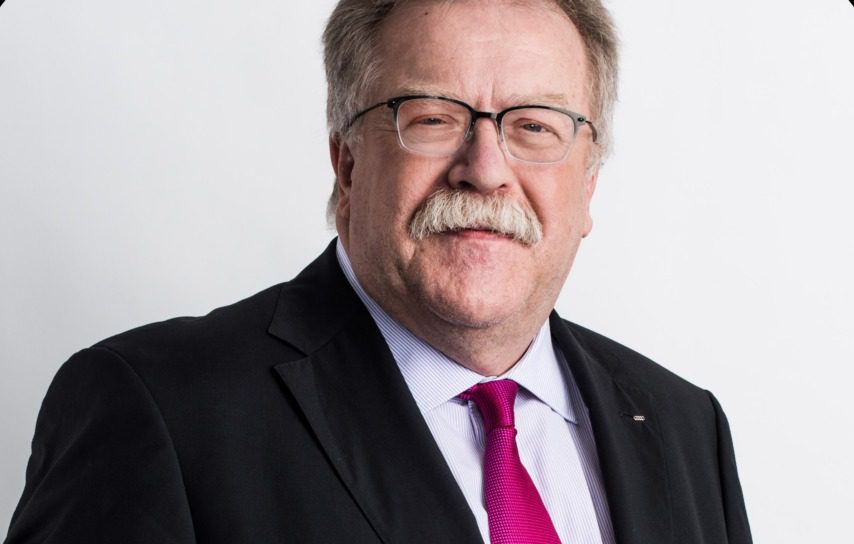Volkswagen Keeps Plugging Away At EV Sales


It seems America’s electric-vehicle revolution not only is slowing but actually might be stalling. One automaker after another is cutting sales expectations, extending production deadlines, handholding with over-inventoried dealers, wondering about the impact of the Biden administration’s expected easing of emissions standards — and otherwise slumping into a resigned posture about a slow-walking of the transformation to EVs that was not imagined even six months ago.
What is Reinhard Fischer doing amid all of this? The other day, the head of strategy for Volkswagen North America was recharging his ID.4 all-electric car at a fast-charging station at a Pilot truck stop on Interstate 81, en route from Volkswagen’s U.S. assembly complex in Chattanooga, Tennessee, to its North American headquarters in Reston, Virginia, with a stop at a supplier along the way.
And he wasn’t sweating things. “With an EV, every 100 to 150 miles you stop and take your break,” Fischer told Chief Executive. “It’s a much more relaxed way to travel. And it forces you to get out and stretch. I like to listen to music while I drive, and that’s much easier with the low noise level of the ID.4.”
Neither is Fischer particularly worried about the pace of increase in EV sales in the U.S., which reached 8.4% of the total in January, “the best share ever.” With all the handwringing across the industry, he noted, EV sales last year came in at just under the 1.2 million units VW had forecast. For this year, the company expects industry all-electric sales to reach about two million units, which would comprise a 10% to 11% market share.
“All OEMs planned too aggressively for the speed of the transition, including us,” Fischer said. “That’s where we’re seeing the corrections now by manufacturers. We are adjusting ID.4 volumes to what we can selling in the market right now, and last year it was the fifth-best-selling EV in the U.S.
“Consumer demand is still there, and manufacturers are now adjusting their production speeds to that demand. That’s the balancing act that is happening right now.”
This will be a telltale year for EV sales, Fischer said, in part because “we’ll see what customers are stepping in besides the trendsetters and early adopters. Is the mass market slowly coming around?” Marketing EVs will reach a new level of frenzy, also, as another 22 battery-electric models from all manufacturers come into the market, “giving customers even more offers to choose from.”
Even Toyota is gaming for a continued increase in EV sales, Fischer said, though VW’s global rival gets a lot of media attention for initially emphasizing gas-electric hybrid models that reassure owners won’t develop range anxiety. Toyota lately has been gearing up plans for a huge battery- and EV-manufacturing complex in Kentucky.
“So their actions are different from their words,” Fischer said. “Maybe they slipped a little bit in estimating the transition to EVs. They are pushing plug-in hybrids now, but they’re preparing for a stronger EV transition by making gigantic investments into the EV infrastructure [before] EV demand skyrockets.”
Fischer has sympathy for suppliers who feel whipsawed by recent uncertainties over the pace of the EV transition but also some advice.
“My angle is to say, when you look at production of [internal-combustion engine, or ICE] vehicles, they’re coming down every year,” he said. “There’s a point where suppliers say, ‘We used to get 100,000 units, but now it’s down to 20,000 units and not worth it to me.’
“So suppliers should never rely on one manufacturer and one part. They’re diversifying. That would be my recommendation. There will be a transition period. All existing OEMs have a huge infrastructure investment in EVs, but [their factories] aren’t going to be full tomorrow. As a supplier, you need to position yourself with the ability to serve in both [EV and ICE] worlds.
“And if you’re a specialized supplier and you only do parts that go into electric motors or battery management, then you need to diversify with different manufacturers; don’t get married to one. Have a basket. One goes up, the other goes down, but you still have demand.”
In fact, VW itself is producing both ID.4’s and ICE vehicles in its Chattanooga assembly complex. “We use different lines for final assembly, but the body shop and paint shop are spared,” Fischer said. “We all need to produce a flexible environment.”


0

1:00 - 5:00 pm
Over 70% of Executives Surveyed Agree: Many Strategic Planning Efforts Lack Systematic Approach Tips for Enhancing Your Strategic Planning Process
Executives expressed frustration with their current strategic planning process. Issues include:
Steve Rutan and Denise Harrison have put together an afternoon workshop that will provide the tools you need to address these concerns. They have worked with hundreds of executives to develop a systematic approach that will enable your team to make better decisions during strategic planning. Steve and Denise will walk you through exercises for prioritizing your lists and steps that will reset and reinvigorate your process. This will be a hands-on workshop that will enable you to think about your business as you use the tools that are being presented. If you are ready for a Strategic Planning tune-up, select this workshop in your registration form. The additional fee of $695 will be added to your total.

2:00 - 5:00 pm
Female leaders face the same issues all leaders do, but they often face additional challenges too. In this peer session, we will facilitate a discussion of best practices and how to overcome common barriers to help women leaders be more effective within and outside their organizations.
Limited space available.

10:30 - 5:00 pm
General’s Retreat at Hermitage Golf Course
Sponsored by UBS
General’s Retreat, built in 1986 with architect Gary Roger Baird, has been voted the “Best Golf Course in Nashville” and is a “must play” when visiting the Nashville, Tennessee area. With the beautiful setting along the Cumberland River, golfers of all capabilities will thoroughly enjoy the golf, scenery and hospitality.
The golf outing fee includes transportation to and from the hotel, greens/cart fees, use of practice facilities, and boxed lunch. The bus will leave the hotel at 10:30 am for a noon shotgun start and return to the hotel after the cocktail reception following the completion of the round.